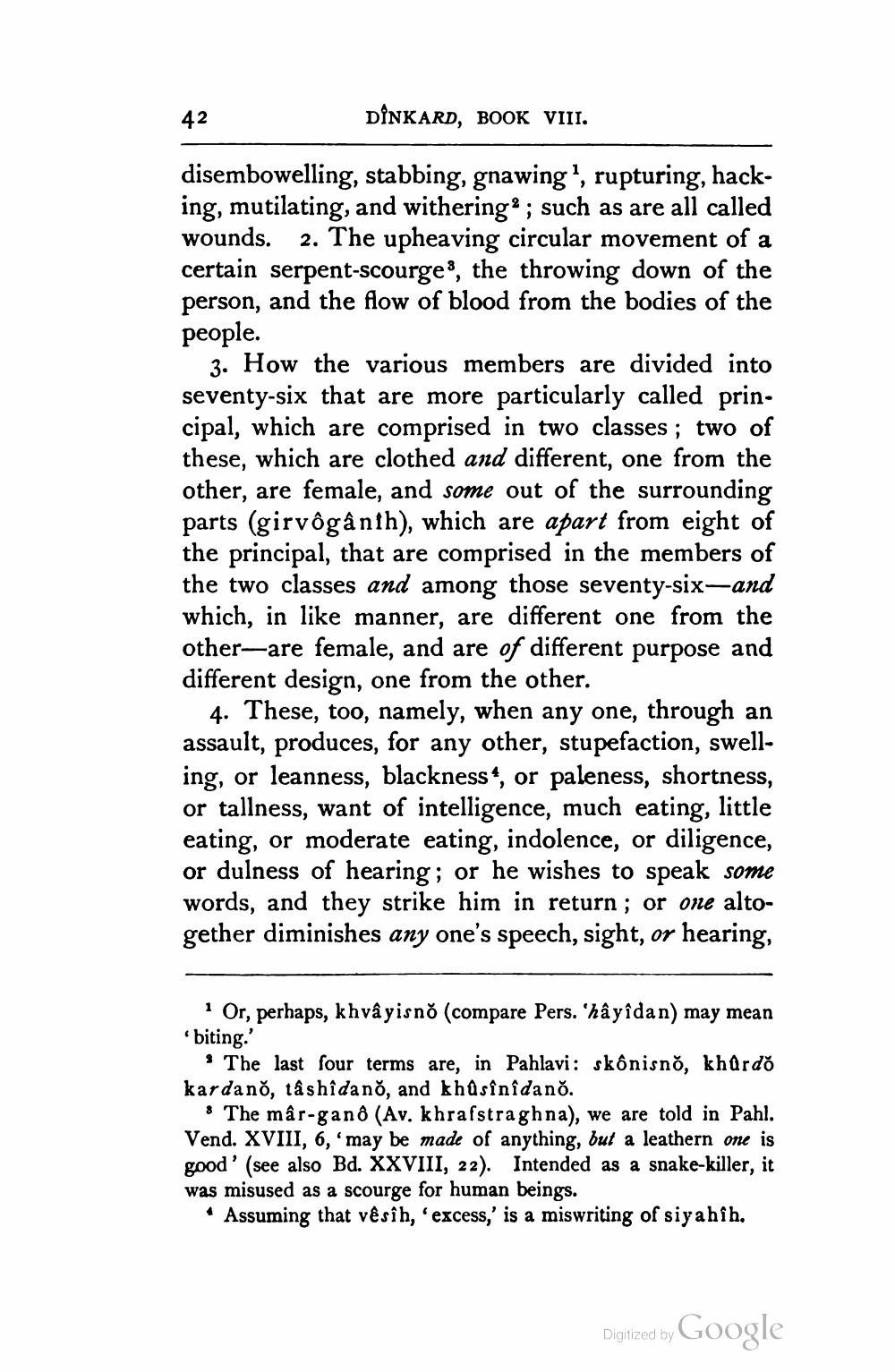________________
42
DÎNKARD, BOOK VIII.
disembowelling, stabbing, gnawing ', rupturing, hacking, mutilating, and withering? ; such as are all called wounds. 2. The upheaving circular movement of a certain serpent-scourges, the throwing down of the person, and the flow of blood from the bodies of the people.
3. How the various members are divided into seventy-six that are more particularly called principal, which are comprised in two classes ; two of these, which are clothed and different, one from the other, are female, and some out of the surrounding parts (girvôgânih), which are apart from eight of the principal, that are comprised in the members of the two classes and among those seventy-six-and which, in like manner, are different one from the other-are female, and are of different purpose and different design, one from the other.
4. These, too, namely, when any one, through an assault, produces, for any other, stupefaction, swelling, or leanness, blackness“, or paleness, shortness, or tallness, want of intelligence, much eating, little eating, or moderate eating, indolence, or diligence, or dulness of hearing; or he wishes to speak some words, and they strike him in return; or one altogether diminishes any one's speech, sight, or hearing,
* Or, perhaps, khvâyisno (compare Pers. ‘hâyîdan) may mean biting.'
The last four terms are, in Pahlavi: skonisno, khQrdo kardano, tashîdano, and khûsînîdano.
• The mâr-gano (Av. khrafstraghna), we are told in Pahl. Vend. XVIII, 6, 'may be made of anything, but a leathern one is good' (see also Bd. XXVIII, 22). Intended as a snake-killer, it was misused as a scourge for human beings.
• Assuming that vêsîh, 'excess,' is a miswriting of siyahih.
Digitized by Google




